Talking Points:
- April marks the worst month of the year for the US Dollar.
- The commodity currencies have typically rallied sharply during April.
- April is the third of four consecutive months of gains for the S&P 500.
See the full rundown of seasonal patterns broken down by currency pairs below, and to receive reports from this analyst, sign up for Christopher’s distribution list.
After what’s been a rather quiet first week of the month for the USDOLLAR Index, traders may have become complacent to some of the longer-term seasonality trends that can influence currencies. As we approach the ides of April, the overwhelming negative US Dollar seasonality patterns suggest that traders should be particularly vigilant when trading USD-pairs, especially as the USDOLLAR Index is grappling with a consolidation pattern around crucial, multi-month support. A technical breakdown in the USDOLLAR Index would be thoroughly supported by the 20-year seasonality trends discussed in this report.
With respect to the news, developments pertaining to FX markets more directly – specifically, central banks – will remain a significant influence over the next several weeks. Market participants have displayed increasing fragility with respect to central banks’ policy shifts, and with several central bank meetings due at the end of the month – the April 21 ECB meeting, the April 27 FOMC meeting, and the April 28 BOJ meeting come to mind – it’s entirely possible that April’s seasonality trends are distorted. The end of the month concentration of major central banks’ meetings obviously represents a major potential catalyst to send markets off their trends, short-term or long-term alike.
For April, as we did in March, we have expanded our focus on the period of 1996 to 2015 in recognition of the evolving relationship between economic data, central banks, and financial markets. The longer observation period captures several crisis events/periods that traders may find analogous to events unfolding today: the Asian crisis; the US tech bubble; the US housing bubble; the global commodity bubble; and previous rate hiking and rate cutting cycles, from the major central banks,during times normal (pre-2008) or extraordinary (post-2008). By increasing the sample size to 20 years, we believe the statistical stability of the estimates will have increased relative to utilizing a shorter time-frame/smaller sample size.
Learn how proper risk management can impact your trading results with the “Traits of Successful Traders” guide.
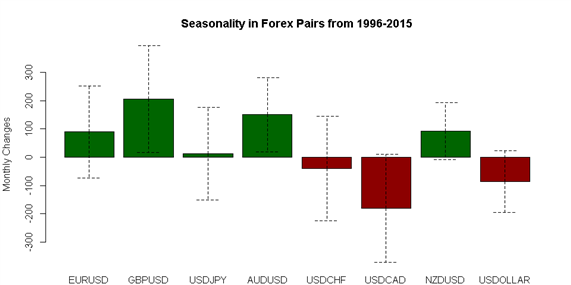
Forex Seasonality in Euro (via EURUSD)
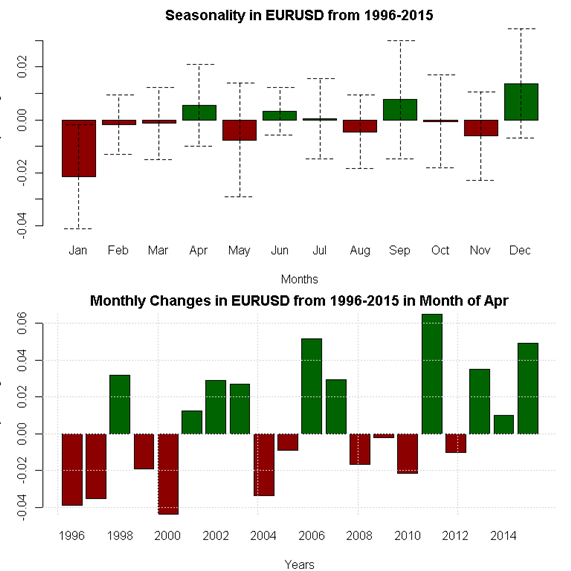
April is a slightly bullish month for EUR/USD, from a seasonality perspective, due to its inconsistent performance metrics. The pair has lost or gain ground equal times in April over the past 20 years, and its average performance during this time frame was +55-pips per month. Recently, EUR/USD has rallied in April in four of the past five years.
If you haven't yet, read the Q2'16 Euro Forecast, "EUR/USD Stuck in No-Man’s Land Headed into Q2’16; Don’t Discount ’Brexit’," as well as the rest of all of DailyFX's Q2'16 quarterly forecasts.
Forex Seasonality in British Pound (via GBPUSD)
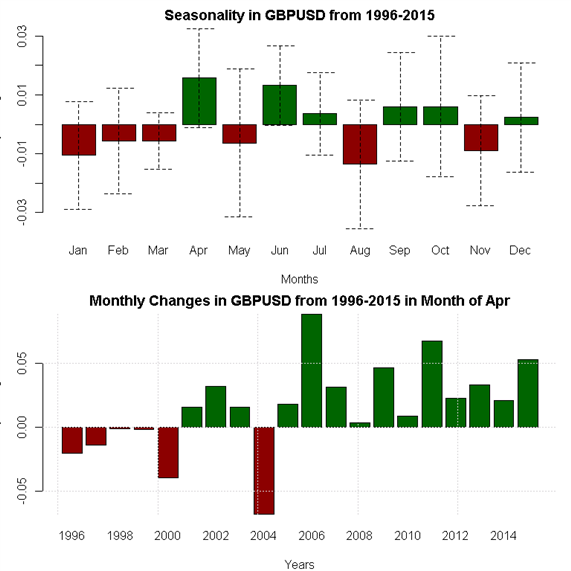
April is a bullish month for GBP/USD from a seasonality perspective. The pair has appreciated 70% of the time in April over the past 20 years, and its average performance during this time frame was +157-pips per month. GBP/USD has gained in April of every year since 2005, with its third-strongest performance over the last 20 years coming in 2015.
Forex Seasonality in Japanese Yen (via USDJPY)
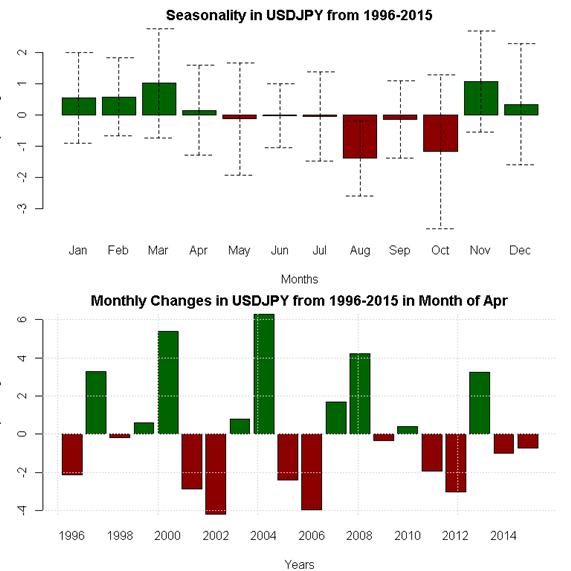
April is a neutral month for USD/JPY, from a seasonality perspective, due to its inconsistent performance metrics. The pair has appreciated only 45% of the time in April over the past 20 years, yet its average performance during this time frame was +155-pips per month. Negative years have been slightly more frequent and have only produced modest losses, while positive years have produced relatively larger gains. USD/JPY has lost ground in April in four of the past five years.
Forex Seasonality in Australian Dollar (via AUDUSD)
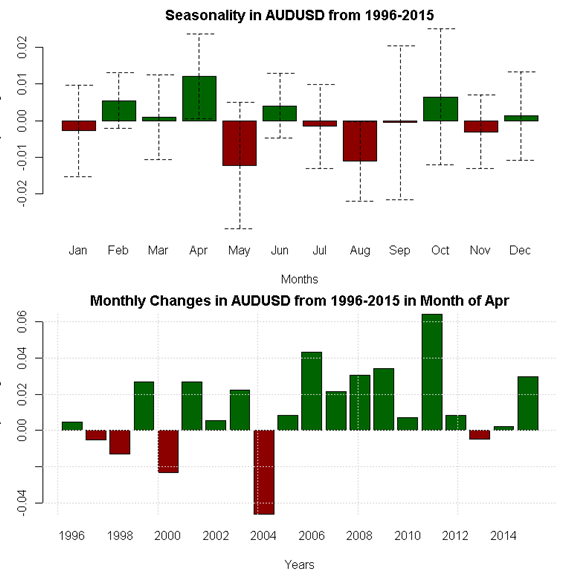
From a seasonality perspective, April is a very bullish month for AUD/USD. The pair has appreciated75% of the time in April over the past 20 years, and its average performance during this time frame was a +122-pips per month. Recently, AUD/USD has rallied in two consecutive Aprils, and has rallied in April in every year since 2005 (but for 2013).
Forex Seasonality in USDOLLAR
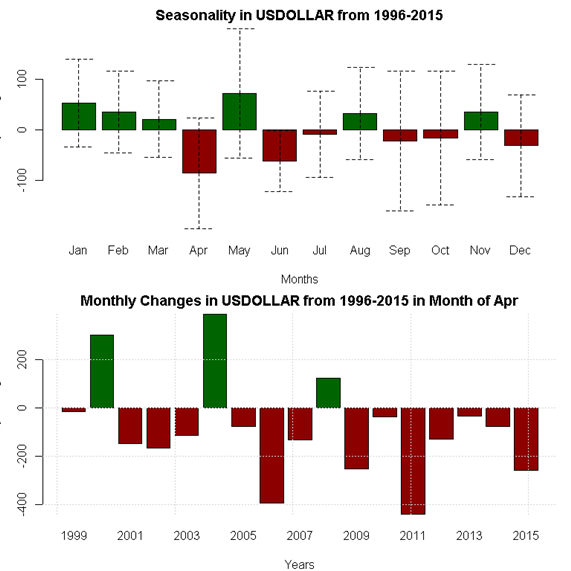
From a seasonality perspective, April is a very bearish month for the USDOLLAR Index. Indeed, April has been its worst month of the year over the past 17 years*, depreciating 82% of the time while, on average, losing-86.4-points per month during that timeframe. Recently, the USDOLLAR Index has lost ground in seven consecutive years.
*USDOLLAR Index only has 17-year data from 1995 to 2015.
Forex Seasonality in New Zealand Dollar (via NZDUSD)
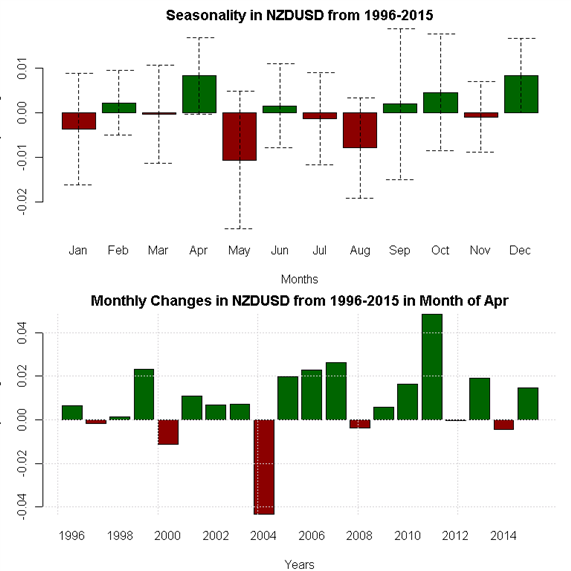
April is a bullish month, from a seasonality perspective, for NZD/USD. The pair has appreciated 70% of the time in April over the past 20 years, and its average performance during this time frame is +82-pips per month. In recent years, NZD/USD has rallied in five of the past seven years and in all but three years since 2005; its average loss during those three years was limited to -28.7-pips.
Forex Seasonality in Canadian Dollar (via USDCAD)
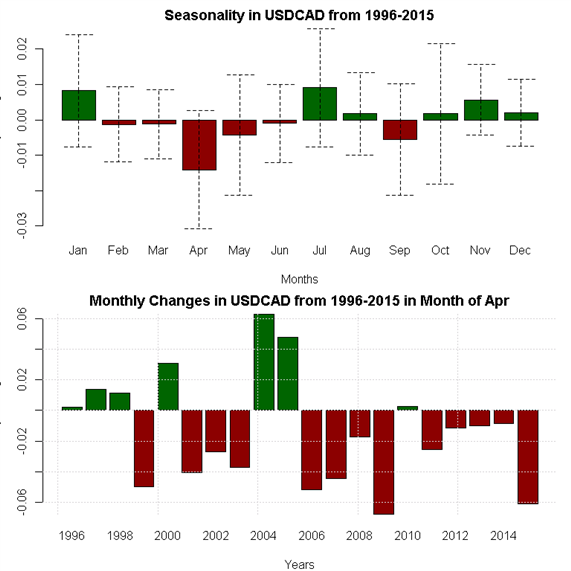
April is a bearish month for USD/CADfrom a seasonality perspective. The pair has depreciated 65% of the time in April over the past 20 years, and its average performance during this time frame is -141-pips per month. Recently, USD/CAD has fallen in five consecutive years and nine of the last ten overall.
Forex Seasonality in Swiss Franc (via USDCHF)
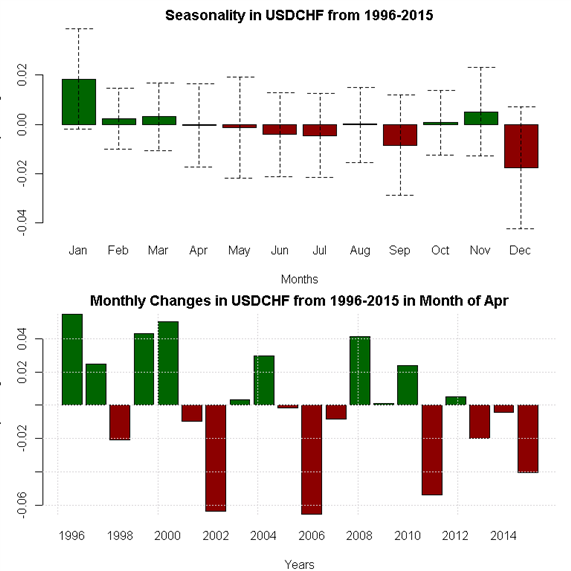
From a seasonality perspective, April is a neutral month for USD/CHF, due to its directionless performance metrics. The pair has lost or gain ground equal times in April over the past 20 years, and its average performance during this time frame was -52-pips per month. Recently, USD/CHF has dropped in April in four of the past five years (mirroring the performance of EUR/USD, which was notably skewed thanks to the EUR/CHF floor).
Forex Seasonality in S&P 500
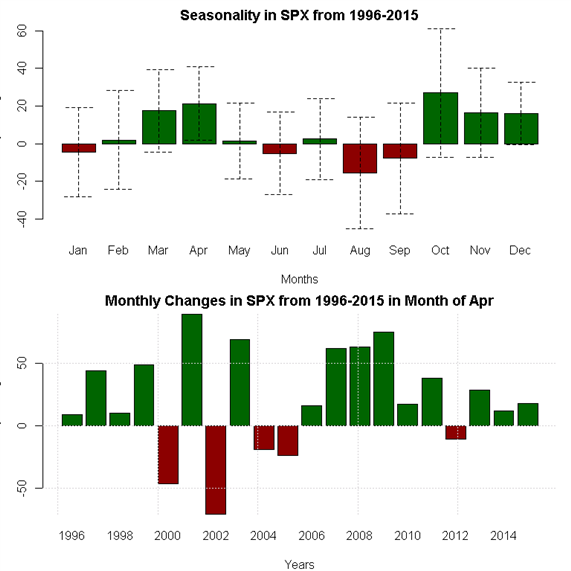
April is a very bullish month for the S&P 500, from a seasonality perspective, due to its consistent performance metrics. The index has gained ground 75% of the time in April, and gains have averaged +21.38-points over the past 20 years. Considering that it is widely understood that recent gains may have been driven by expansive central bank monetary policy during the post-GFC/Great Recession years, the S&P 500 is perhaps the most interesting instrument to track compared to its seasonality trends as the Fed attempts to normalize policy. Recently, the S&P 500 gained in each of the past three years, and every year going back to 2006 (but for 2012).
Forex Seasonality in Gold
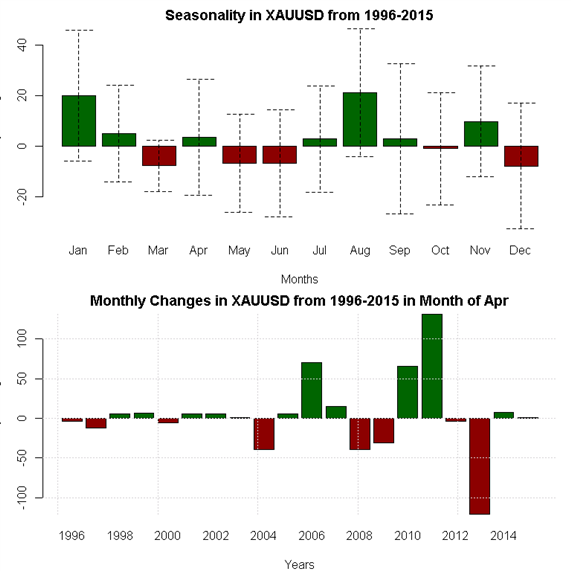
From a seasonality perspective, April is only a slightly bullish month for Gold. The precious metal has appreciated 60% of the time in April over the past 20 years, yet its average performance during this time frame was +$3.34/oz per month. Recent years haven’t been kind to Gold, with little net-movement in each of the past two years. 2013 produced an explosive move lower, while 2012 was once again quieter. Gold’s performance metrics indicate a high degree of disparity, particularly since the GFC.
Read more: USDOLLAR Index Holding Support as USD/JPY Dives
If you haven't yet, read the Q2'16 Euro Forecast, "EUR/USD Stuck in No-Man’s Land Headed into Q2’16; Don’t Discount ’Brexit’," as well as the rest of all of DailyFX's Q2'16 quarterly forecasts.
--- Written by Christopher Vecchio, Currency Strategist
To contact Christopher Vecchio, e-mail cvecchio@dailyfx.com
Follow him on Twitter at @CVecchioFX
To be added to Christopher’s e-mail distribution list, please fill out this form
original source





